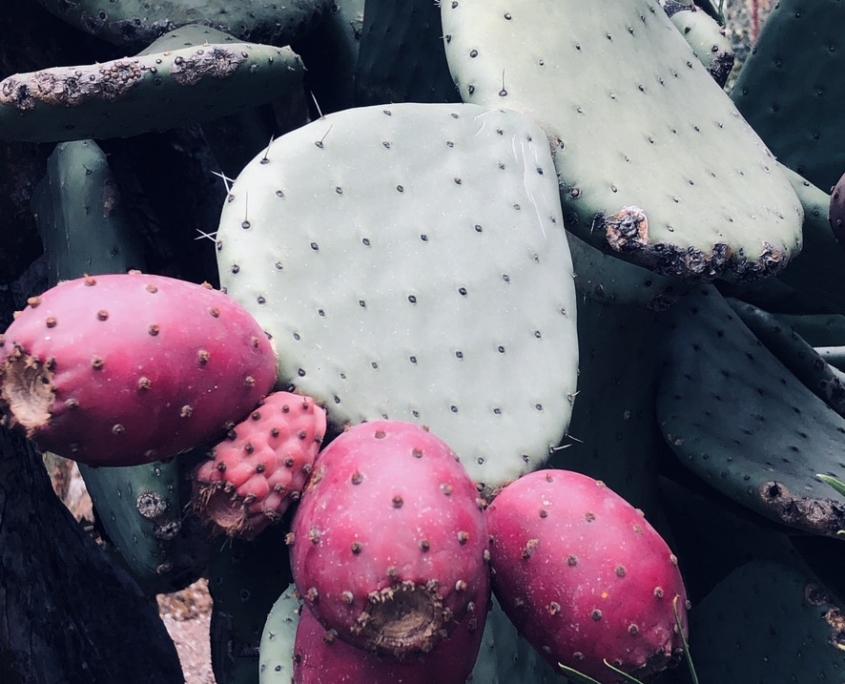The UN Believes the Prickly Pear Could Be the Key to Food Security
 The opuntia, better known as the prickly pear, could be the key to food security in the world’s most arid countries, according to the U.N.’s Food and Agriculture Organization (FAO). This statement is born from the results of a five-year study conducted by the University of Nevada, Reno. The study sought to examine the potential benefits of cultivating the prickly pear on a mass scale. Many people who live in rural areas consider this cactus to be little more than a formidable and even dangerous weed. It proliferates easily, is difficult to uproot and poses a threat to livestock who can injure themselves and their digestive systems on the sharp spines. However, the FAO believes the benefits can outweigh the downsides. Here is why this international humanitarian organization thinks the prickly pear is fundamental in the fight for food security.
The opuntia, better known as the prickly pear, could be the key to food security in the world’s most arid countries, according to the U.N.’s Food and Agriculture Organization (FAO). This statement is born from the results of a five-year study conducted by the University of Nevada, Reno. The study sought to examine the potential benefits of cultivating the prickly pear on a mass scale. Many people who live in rural areas consider this cactus to be little more than a formidable and even dangerous weed. It proliferates easily, is difficult to uproot and poses a threat to livestock who can injure themselves and their digestive systems on the sharp spines. However, the FAO believes the benefits can outweigh the downsides. Here is why this international humanitarian organization thinks the prickly pear is fundamental in the fight for food security.
Resistance to Drought and Heat
The study states that the prickly pear requires up to 80% less water than crops such as corn, rice and soy. Additionally, those crops have upper-temperature limits, whereas the prickly pear is able to grow in extreme heat. Africa’s largest country, Algeria, is classified as being around 80% arid or semi-arid, which leaves its population of more than 43 million vulnerable to food insecurity. In 2013, the country formed a cooperative of farmers, scientists and traders to begin cultivating the prickly pear. For this project, they consulted with Mexico, whose people and ancestors have ample experience with the cactus.
The cooperative built its first processing factory in 2015. The factory produces oil that is exported to France, Germany and Qatar. Since then, the enterprise has steadily grown. The cooperative built another factory in 2018 and plans to begin exporting its goods to the United States.
Can be Used as a Biofuel
The primary crops grown for biofuels are corn, sugar cane, soybean and palm oil, which comprise 97% of the biofuel industry. Sugar cane and corn require three to six times more water than the prickly pear, though they produce the same amount of energy. When grown as biofuel, corn, sugar cane, soy and palm oil crops can only be used for that very purpose. In contrast, farmers can first harvest the prickly pear for food before its waste-product is converted into fuel. It’s a circular system versus a linear system. When it comes to the question of the prickly pear as the key to food security, this distinction makes all the difference.
Food for Humans and Livestock
The prickly pear borders on being a superfood. It’s rich in vitamins, minerals and phytonutrients. It contains antioxidants and is anti-viral and anti-inflammatory. For animals, the plant’s pads, or “nopales,” contain nearly 80% water, making them ideal feed for livestock. It can also be prepared in countless ways, though many people around the globe are unfamiliar with its myriad of uses.
Eritrea, a northeast African country is a prime example of this missed opportunity. Here, they sell the prickly pear on roadsides and in marketplaces alongside more popular fruits such as bananas, guavas and oranges. However, the Eritrean people, who regularly face food shortages, are largely unfamiliar with the number of ways the plant can be consumed. As a result, it has yet to be cultivated on a mass scale. Nearly all of the prickly pears that are brought to market are harvested from wild cacti.
Can Function as a Carbon Sink
One of the strongest arguments for the prickly pear as the key to food security is its function as a “carbon sink.” The fruit grows in areas where other plant life can not be established and then captures excess CO2 from the atmosphere. Cultivated on a mass scale, this could lead to lower temperatures and more rainfall, thus decreasing the number of droughts that threaten food security worldwide.
Challenges and Opportunities Ahead
In 2015, Madagascar faced a drought-induced famine. The lack of rain laid waste to their chief crops, including rice, cassava and sweet potatoes. Desperate for nourishment, many turned to the prickly pear, which was then regarded as a weed. The FAO points to the plant’s usefulness during the direst conditions as proof of the potential benefits of cultivating it on a larger scale. Droughts have continued to plague the people of Madagascar, with approximately one million inhabitants living on the brink of famine. The continued suffering of those living in the world’s most precarious conditions underscores the need for attainable, wholesale solutions. The FAO believes one such solution, agriculture or “green gold,” is well within reach.
– Greg Fortier
Photo: Flickr
